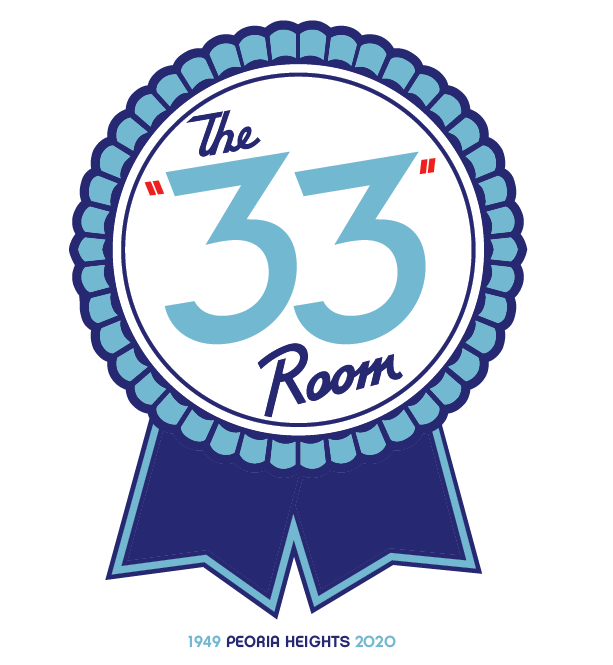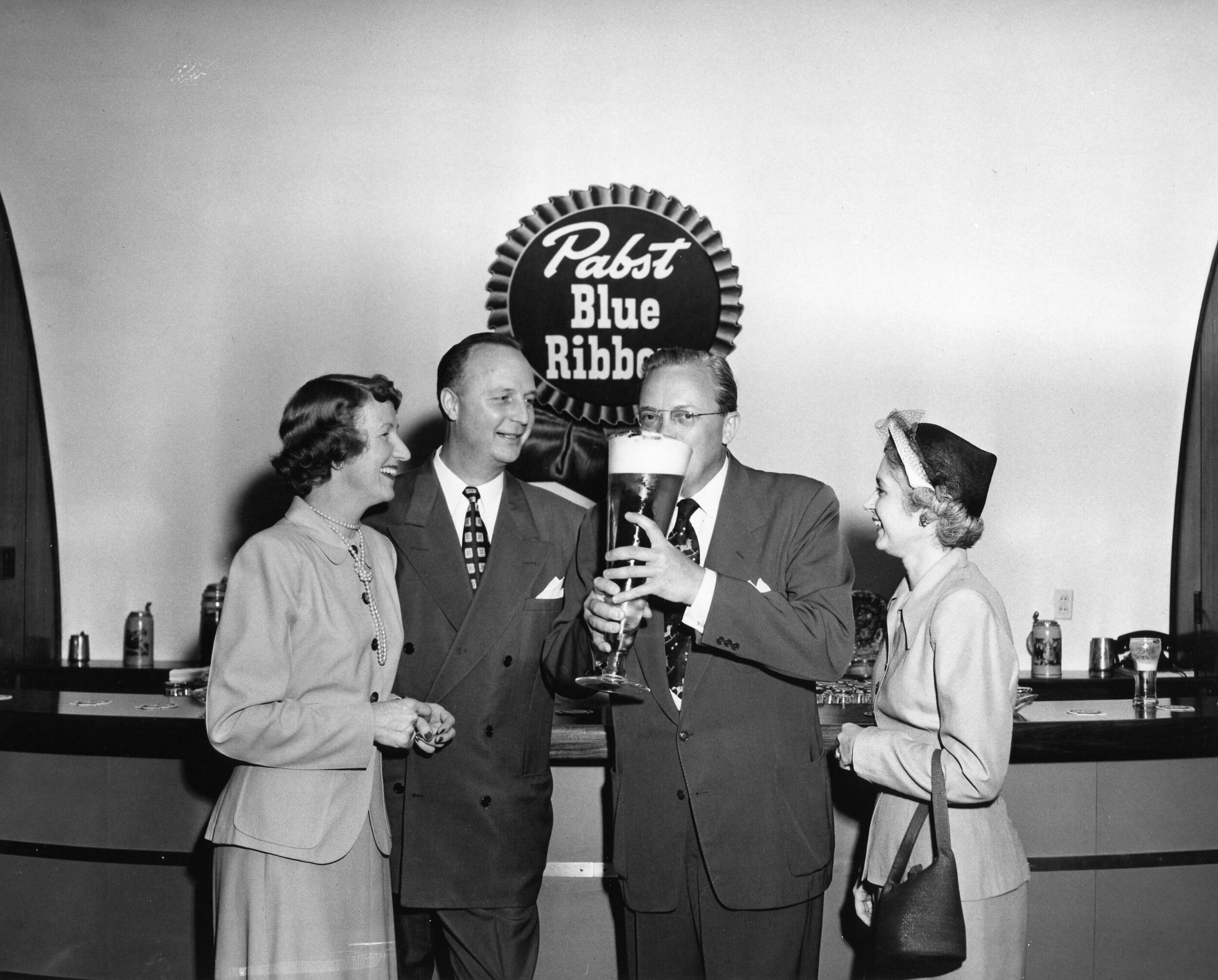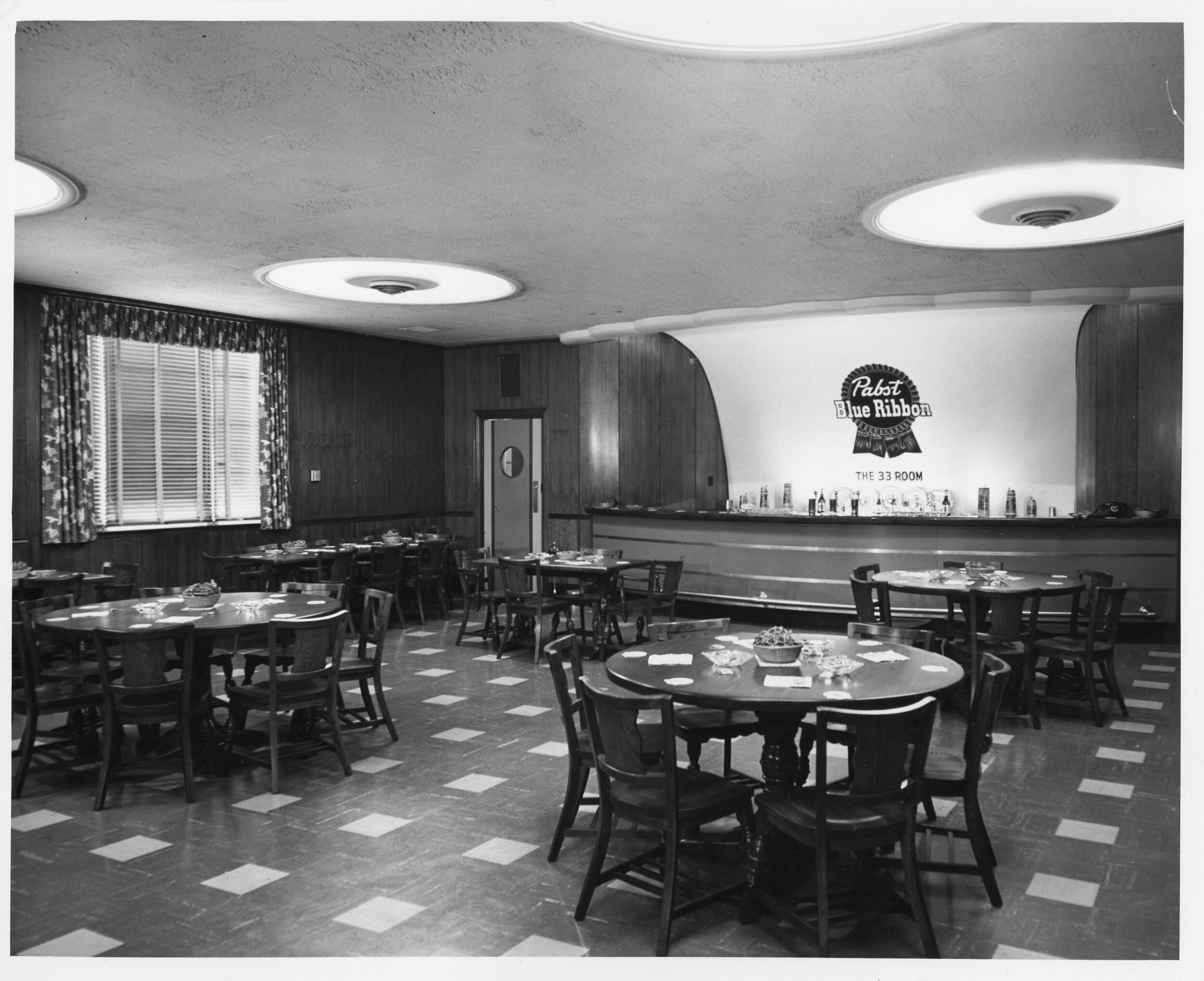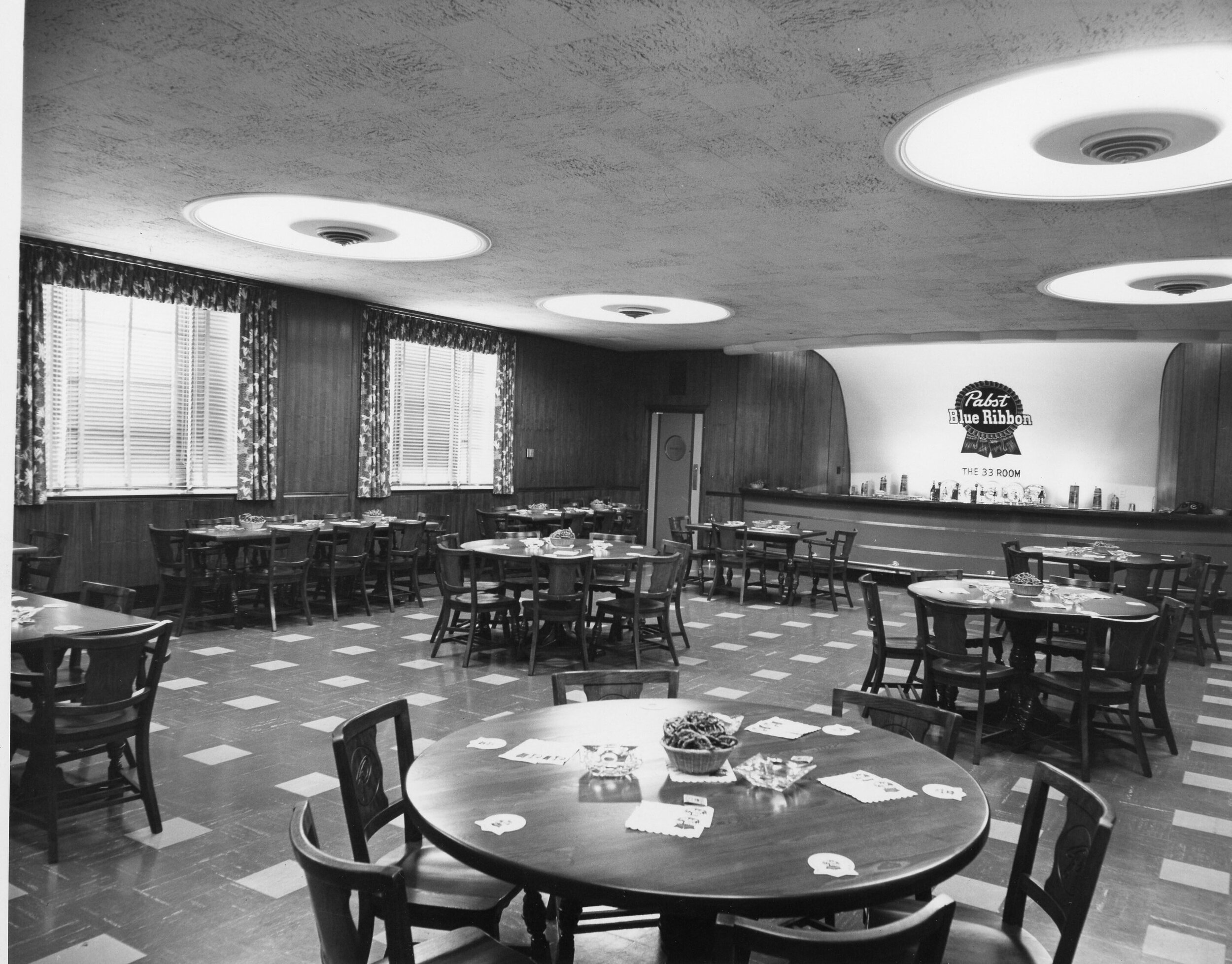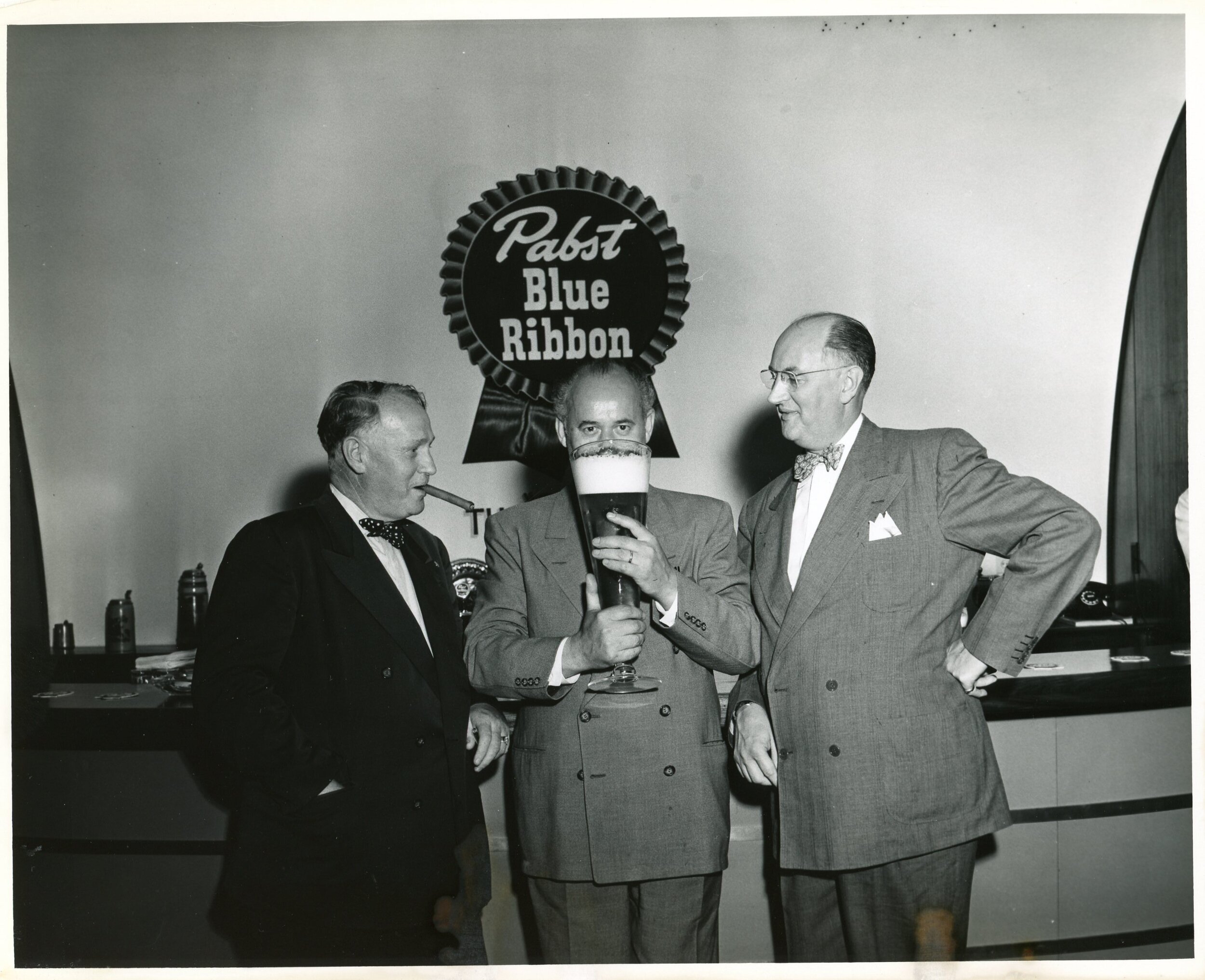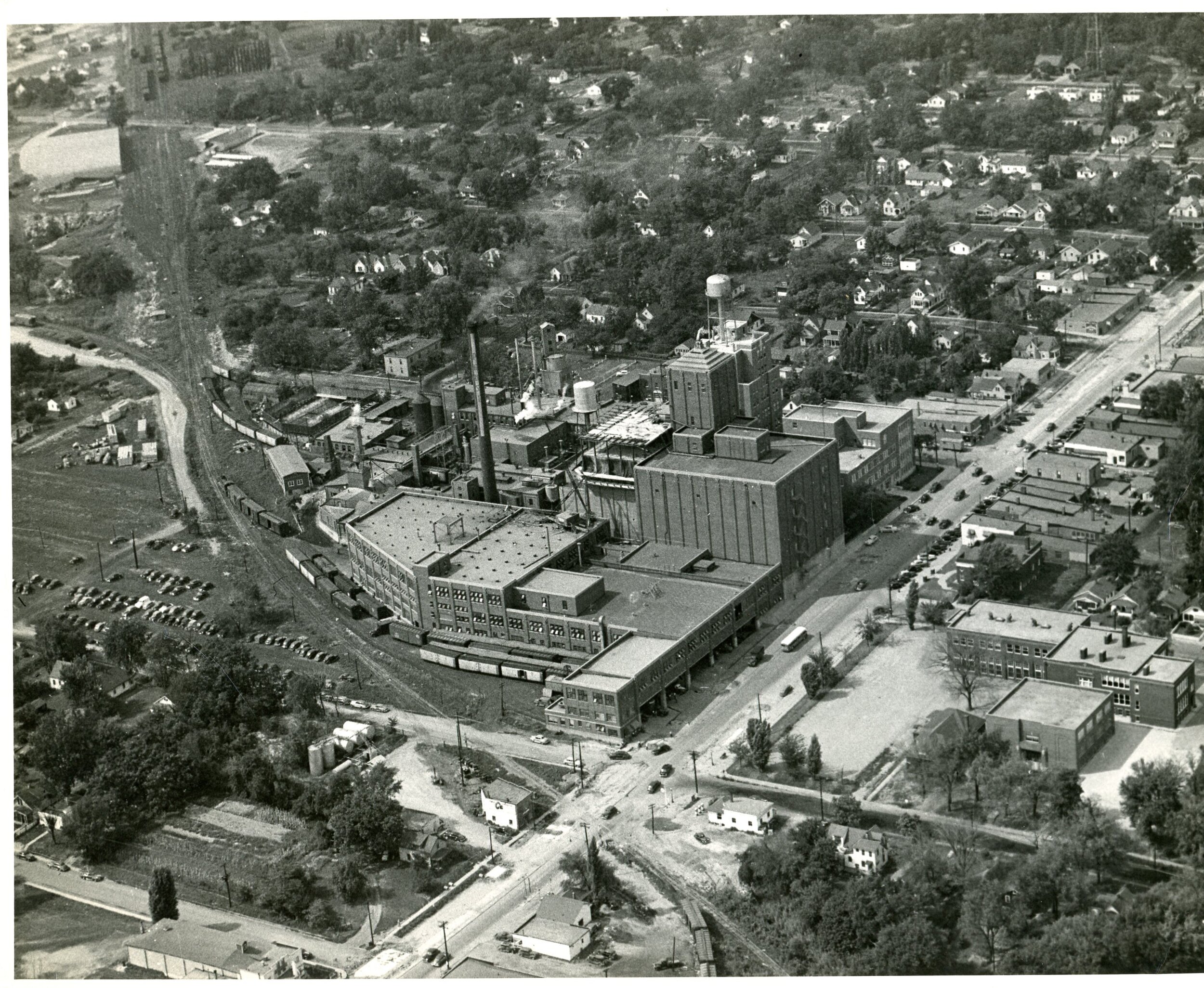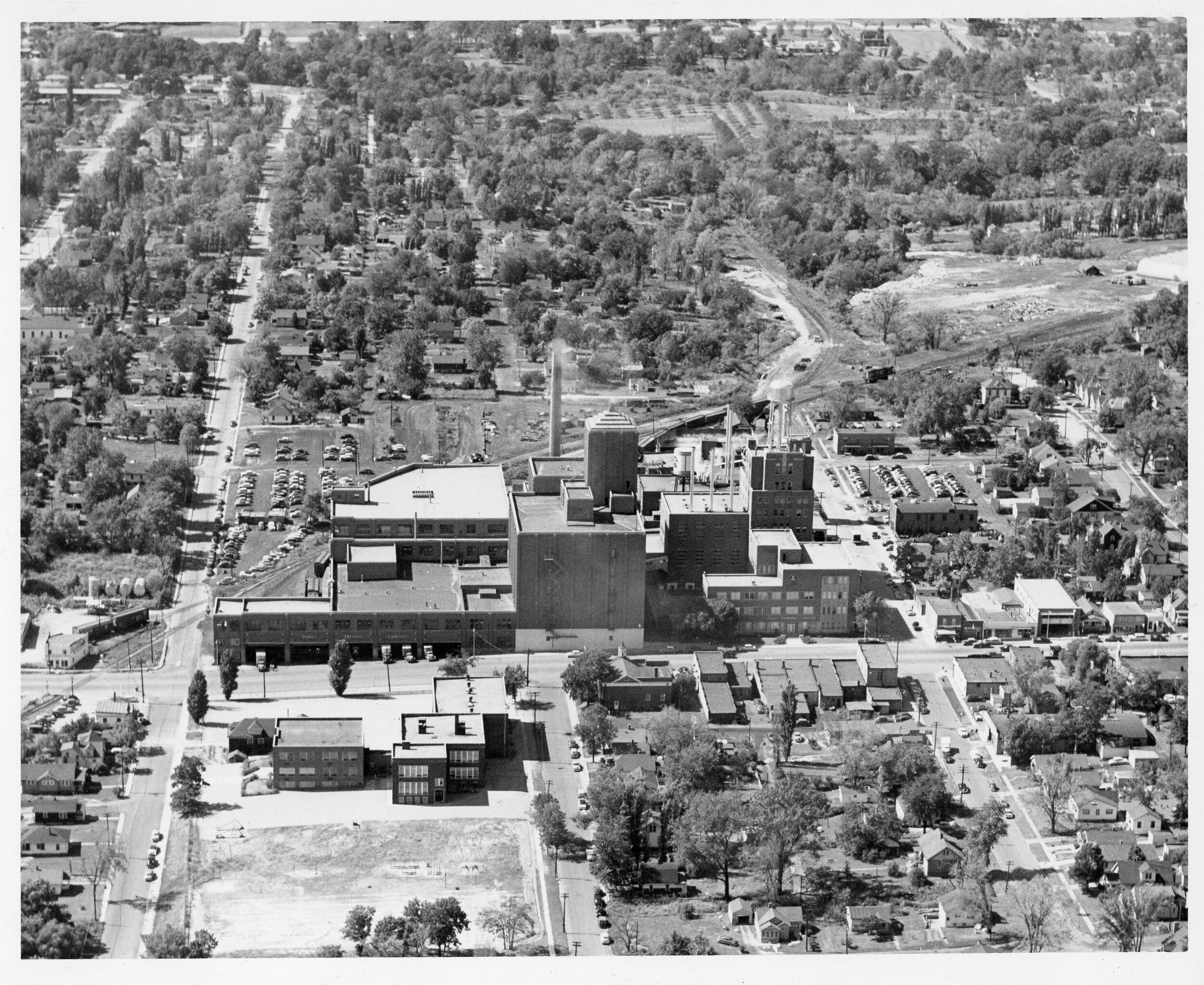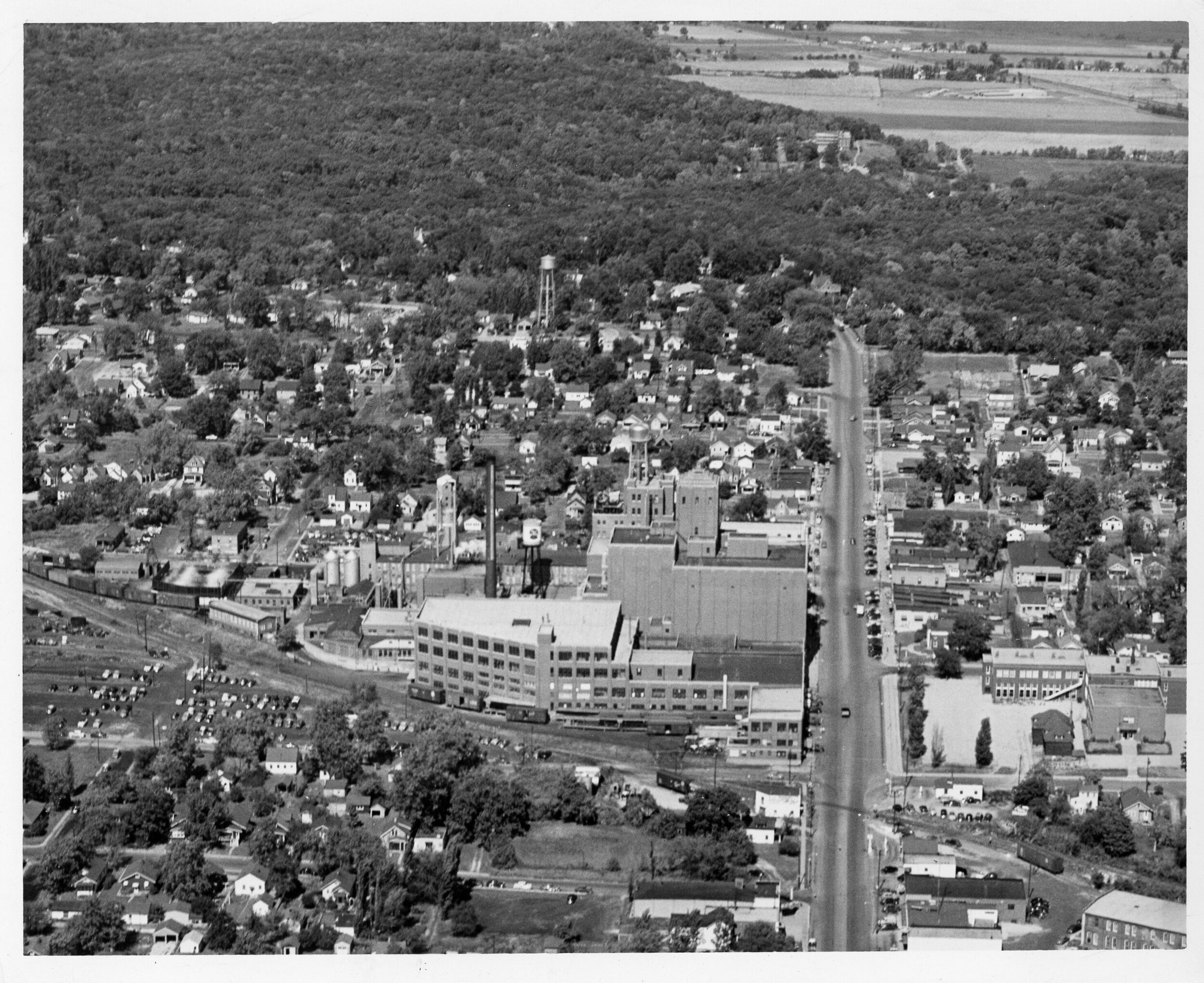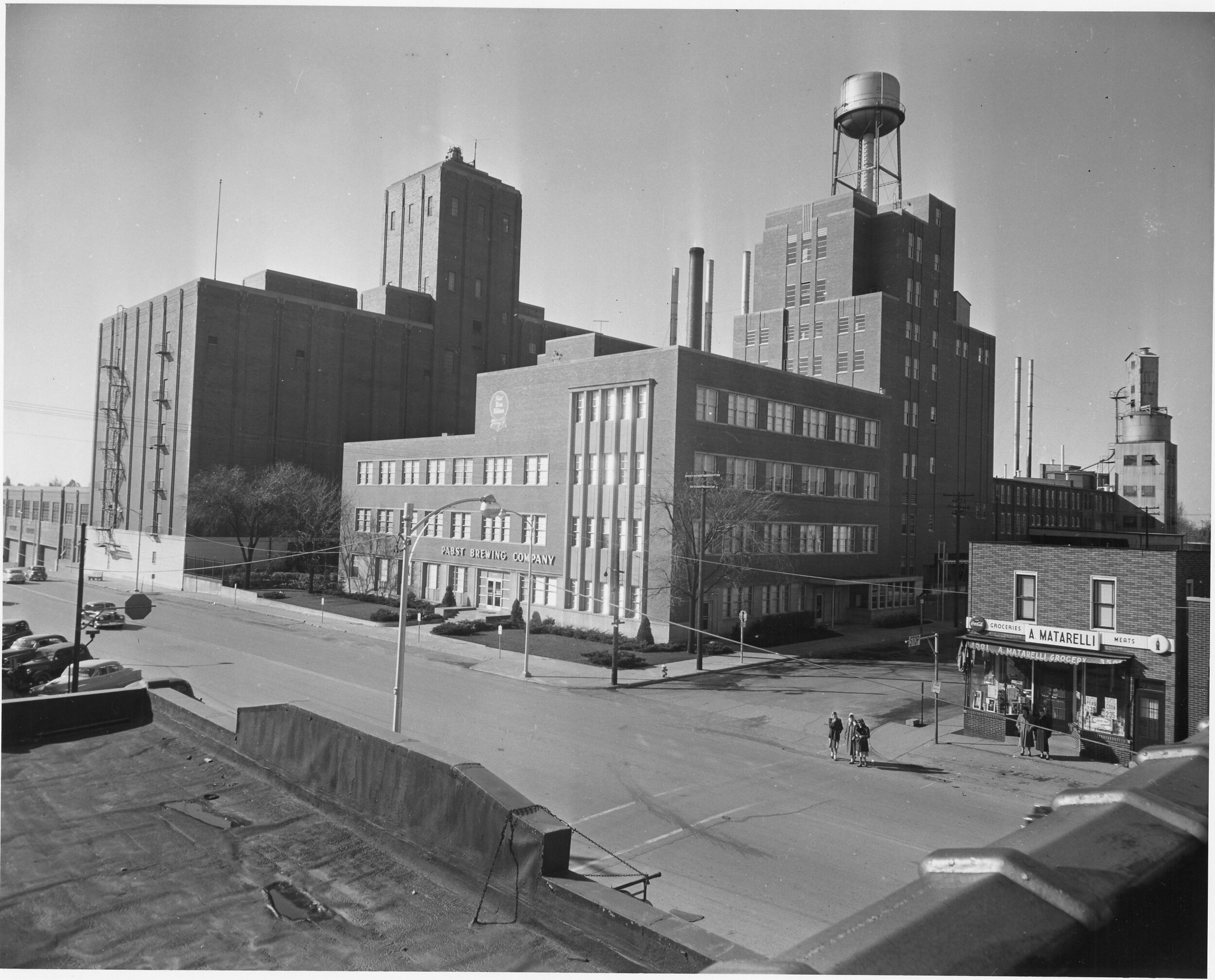The Congenial 33 Room at the Old Pabst Brewery
The 33 Room, the primary hospitality suite at the Old Pabst Peoria Heights brewery, was dedicated on March 21, 1949, along with the new modernized brew house and new administration building, in week-long celebrations led by the city and Pabst officials. It was proclaimed by then Peoria Heights Mayor Guy Yates and Peoria Mayor Carl Treibel as “Blue Ribbon Week” for the entire Peoria area.
The name The 33 Room was derived from the slogan Pabst used in the 1940’s: “33 Fine Brews Blended into One Great Beer”.
Since The 33 Room’s inception, visitors from around the world that toured the brewery were followed by a warm welcome to the comfort of The 33 Room , the headquarters of the Pabst-Peoria hospitality, for a tall foaming glass of blendid-spendid Pabst Blue Ribbon!
One of the original bartenders at The 33 Room was Harry R. Ballard. He took great pride in being a bartender’s bartender. His pride in Pabst and its wonderful beer allowed him to talk to patrons not only about the visitors from around the world he encountered, but also about the fine people at Pabst, the high quality of their raw materials, the care used in in controlling the brewing process, and the know-how that was a Pabst tradition. He tapped countless barrels of Blue Ribbon, and talked about how easy it was to handle, how each glass draws perfectly and the satisfaction it brought to his guests. Just another example of the Pabst 's attention to quality and providing first class hospitality to its guests at The 33 Room .
Not just brewery tour attendees were hosted at the 33 Room . Blue Ribbon Hall, a 500-seat auditorium in the brew house, hosted lectures, banquets, employee and community entertainment, including Vaudeville acts and orchestras, were typically followed by a good fellowship hour at The 33 Room .
Many celebrities and dignitaries have visited The 33 Room for a glass of Blue Ribbon over the years. Some of those include; Illinois Governor Adlai Stevenson in town for the dedication ceremony along with Pabst Chairman of the Board Fred Pabst Sr., (grandson of Capt. Frederick Pabst for which the brewery was named); Harris Perlstein, Pabst President; J.G. Shakman, Pabst Vice-President; Pabst Radio personalities Eddie Cantor and the entire cast of the Pabst Blue Ribbon radio show, as well as Ex-Congressman Everett Dirksen.
In 1956, Pabst estimated that 50,000 people visit the Peoria Heights plant every year for regular tours and group meetings. These groups came for civic, fraternal, veteran, church, business and distributor group meetings in the plant, and all were offered complementary glasses of Pabst Blue Ribbon Beer afterwards in the 33 Room.
In addition to the nightly clean-up at the Peoria Heights plant, The 33 Room floors were scrubbed and waxed weekly, venetian blinds and drapes were cleaned, which they received many comments on the beautiful cleanliness that went along with The 33 Room hospitality and quality that Pabst was known for.
Ironically, The 33 Room was open for 33 years from 1949-1982 when the plant was shut down. More than 1,000,000 glasses of the finest beer served – anywhere…..Pabst Blue Ribbon…..was poured to the countless guests that the brewery entertained during that period in The 33 Room.
So, if your bartender asks, “What’ll you have?” just say “Pabst Blue Ribbon”!
History of the Pabst Building
Premier Malt Products Co.
(1924-1933)
Did you know that in 1924, Premier Malt Products Co. in Decatur needed a new factory that allowed for expansion of their quickly growing Malt Syrup business? They bought the former Bartholomew Co. plant on this site making Peoria Heights their new principal office and factory.
In 1925, after a year of building improvements and additions, the former automobile plant was converted into manufacturing malt products, and malt syrup production began on this site.
Premier Malt Products was best known for its Blue Ribbon Malt Extract. In fact, it was Americas greatest selling malt extract. While advertising promoted it’s use in baking, it was also a key ingredient for home brewing during prohibition.
The process of making malt syrup and brewing beer are very similar. In the early 1930’s, as the onset of prohibition was looming, PMP wanted to start brewing beer, if it became legal again. They had the money to convert their plant to a brewery but lacked a nationally recognized beer. Pabst Brewing Co., had a nationally recognized beer before prohibition, but the dry years were not as profitable as the pre-prohibition days. Harris Perlstein (President of PMP Co.) and Fred Pabst (President of Pabst Brewing Co.), were business acquaintances, and agreed to merge the two companies. On Oct 28th, 1932, the Premier-Pabst Corp. was formed.
Premier-Pabst Corp.
(1933-1938)
In 1933, beer was again legal, and construction began converting the malt syrup plant into a brewery. By 1934, Pabst Beer and Ale was being brewed in Peoria Heights and being shipped coast to coast. Malt Syrup production continued at the new brewery as well. By the end of 1938, the Board of Directors decided to change the name back to Pabst Brewing Co.
Pabst Brewing Co.
(1939-1982)
The brewery in the Heights continued to grow as sales for Pabst was strong. In 1941, the Peoria Heights brewery had a brewing capacity of 1,000,000 barrels. (That’s 330 million 12 oz servings!)
The majority of what was brewed here in the Heights was shipped across the U.S. and overseas. During World War II, servicemen from Central Illinois had Peoria Heights brewed Pabst shipped to U.S. bases in specially designed cans for a small, but warm, comfort from home.
By 1949, with the need for more capacity, Pabst modernized the Heights brewery by adding a new brewhouse, along with an administration building. The new office building had a laboratory for testing the quality of their products, an air-conditioned soundproof library, and a hospitality room. The dedication ceremony was March 21-26, known as “Blue Ribbon Week” in the Peoria area. The “33" Room entertained folks from around the world, tapping barrel after barrel of freshly brewed Peoria Heights Pabst Blue Ribbon for almost 33 years. Today, The 33 Room, with its original backbar, has reemerged as a hospitality suite, open to the public and available for private events.
The 1970s and early 80s brought tougher times for Pabst. Sales had been dropping, and at the end of 1981, the unfortunate decision to close the Peoria Heights plant was made. At the time of the closing in 1982, it was the 4th largest brewery in the U.S., with a brewing capacity of 3,500,000 barrels. Pabst in Peoria Heights had a peak employment of over 1,000. Attempts to revive the site as another brewery failed, as times were tough for most brewers in the 80s. The majority of the plant was torn down after a fire started during dismantling of the brewing equipment. All that remains today of the original complex is the office building and The 33 Room, the Continental Can warehouse and the water treatment building.
